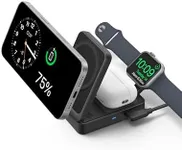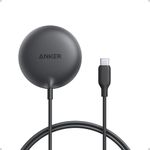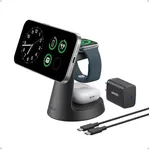Buying Guide for the Best Wireless Chargers
Choosing a wireless charger can make your daily charging routine much more convenient, as you simply place your device on the pad or stand without plugging in any cables. However, not all wireless chargers are the same, and picking the right one depends on your device, how you use it, and where you plan to keep the charger. Understanding the key features will help you find a charger that fits your needs and ensures safe, efficient charging.Charging Speed (Wattage)Charging speed, usually measured in watts (W), tells you how quickly the charger can power up your device. Higher wattage means faster charging, but only if your device supports it. Wireless chargers typically range from 5W to 15W or more. Lower wattages (5W-7.5W) are suitable for overnight charging or for devices that don’t support fast charging. Mid-range (10W) is a good balance for most modern phones, while higher wattages (15W and above) are best for the latest devices that support fast wireless charging. To pick the right one, check your device’s maximum supported wireless charging speed and choose a charger that matches or slightly exceeds it for optimal performance.
Charger Type (Pad vs. Stand)Wireless chargers come mainly as flat pads or angled stands. Pads are compact and good for placing your device flat, which is ideal for nightstands or desks where you don’t need to see the screen. Stands hold your device upright, making it easier to view notifications or use your phone while it charges, which is great for workspaces or video calls. Think about where you’ll use the charger and whether you want to interact with your device while it’s charging to decide which type suits you best.
Device CompatibilityNot all wireless chargers work with every device. Most use the Qi standard, which is widely supported by modern smartphones and accessories, but some older or less common devices may not be compatible. Some chargers are optimized for specific brands or models, offering features like magnetic alignment or faster charging for certain devices. Always check if your device supports Qi wireless charging and whether the charger offers any special features for your brand or model to ensure a smooth experience.
Number of Devices SupportedSome wireless chargers can charge more than one device at a time, such as a phone and a smartwatch or earbuds. Single-device chargers are smaller and simpler, while multi-device chargers are larger but more convenient if you have several gadgets. If you only need to charge your phone, a single pad or stand is enough. If you have multiple wireless charging devices, consider a multi-device charger to keep everything powered up in one place.
Build Quality and Safety FeaturesBuild quality affects how long your charger will last and how safe it is to use. Look for chargers with sturdy construction and features like non-slip surfaces to keep your device in place. Safety features such as overcharge protection, temperature control, and foreign object detection help prevent damage to your device and charger. If you plan to use the charger frequently or overnight, prioritize models with strong safety features and good reviews for reliability.
PortabilityPortability refers to how easy it is to carry the charger with you. Slim, lightweight chargers are great for travel or moving between home and office, while larger, heavier models are better suited for a permanent spot. If you travel often or want a charger for your bag, look for compact designs. For home or office use, size is less important, so you can focus on other features.
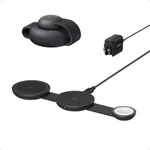
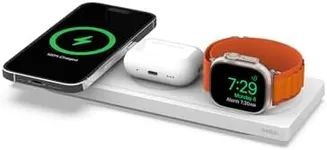
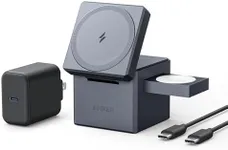

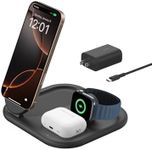
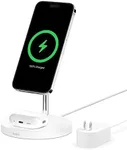
![Yootech Wireless Charger, [2 Pack]](https://images-proxy.bestreviews.guide/hkkcsmtl5W3vrHT0zUr5pZ8UorU=/0x150/https://m.media-amazon.com/images/I/41XKzh5gPqL._AC_CX679_.jpg)




